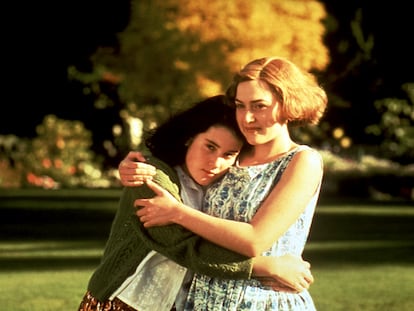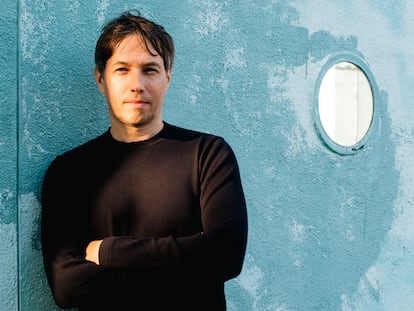‘Interview with the Vampire,’ the Tom Cruise hit that almost derailed
Thirty years after the release of Neil Jordan’s film, time has been kind to a story that faced a shoot full of adversities and casting that, despite the reservations of the book’s author, ended up working

When Interview with the Vampire was released in November 1994, Hurricane Gordon (the older brother of Katrina, Celia and many other devastating storms) had just ripped through the islands of the northern Caribbean and the east coast of the United States. Saddam Hussein’s Iraq was deploying armored divisions on the border with Kuwait. Bill Clinton was showing his support for the Kyoto Protocol. Boris Yeltsin was about to invade Chechnya. A genocide was brewing in Rwanda. The Eurostar was traversing the underwater tunnel of the English Channel for the first time. Sweden was joining the European Union and Norway was choosing to stay away.
That was a very different world from today, with cinema in the process of forced digitalization, a nascent internet, Michael Jordan still active, a Brazil national team that had not yet completely renounced jogo bonito, democratic transitions in South Africa and Angola, Clinton’s Third Way enthroned in Washington D.C., Silvio Berlusconi in Rome, John Major in London, François Mitterrand in Paris and Felipe González governing Spain in a minority with the suspicious support of Catalan and Basque nationalists.
In that context, a vampire film starring Tom Cruise and directed by cult filmmaker Neil Jordan burst onto the box office scene with unusual force, outstripping mainstream blockbusters such as Kenneth Branagh’s Frankenstein, Stargate and Star Trek: Generations. Only the crude and unhinged Christmas comedy The Santa Clause was able to resist the impetus of Jordan and his gothic fantasy, which would end up grossing around $224 million.
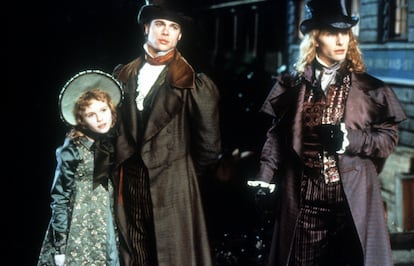
Love at first bite
The story, adapted from Anne Rice’s novel, started off strongly: a journalist from San Francisco sits down in front of a man who claims to be a vampire, who has been walking the world since the 18th century, and offers to tell him his story. The critics, however, were less positive at the time. Perhaps the high expectations generated and the large amount of money that had been invested in the landing of Jordan in American genre blockbusters weighed in.
Roger Ebert praised production designer Dante Ferretti’s sumptuous sets but thought Jordan’s work paled in comparison to illustrious predecessors such as F.W. Murnau’s Nosferatu (1922) and Francis Ford Coppola’s Bram Stoker’s Dracula (1992). Todd McCarthy called the film “chilly, lifeless” emotionally, a far cry from the murky, blood-soaked passion of Rice’s novel on which it was based. Desson Thomson critized the casting of Tom Cruise, arguing the actor had, once again embarked, on one of the displays of narcissistic histrionics that were weighing down his career.
Contemporary opinions tend to be rather more benign. The film has aged well, had a notable cultural impact, and arguably projects a very clear aura. Today we see it as a worthy representative of the 1990s, an era that analysts like Ricky D’Ambrose consider one of the best in the history of cinema, on a par with even the 1970s and 1940s. Even so, some of the contemporary re-readings that are being made, coinciding with the release in American theaters of a remastered version for the film’s 30th anniversary, have focused on aspects that seem shocking to us today and remind us, as Gary Oldman’s Dracula would say, that the three decades that separate us from it are “an ocean of time.”

Kiss me, kiss me a lot
First of all, BuzzFeed writer Stephanie Soteriou finds it “extremely inappropriate” that an 11-year-old actress, Kirsten Dunst, was “forced” to kiss an adult like Brad Pitt on the lips. The truth is that Dunst was on the verge of refusing to do so. She found it, as she explained shortly afterward and has reiterated on several occasions, “strange and uncomfortable.” For her, Pitt was like her older brother on the set, the colleague who looked after her and treated her “like a princess.” In addition, she had never kissed anyone on the mouth.
The sequence, despite Dunst’s strong objections, was considered crucial to the film, and Jordan, the crew, her co-stars and even her own mother, who was present at the shoot, tried hard to persuade her that it was not that big a deal. She kissed Pitt, after few days earlier having done something else that she also found unpleasant: biting the sweat-soaked neck of a supporting actor.
It was a different time. Intimacy coordinators had not yet appeared on set, comprehensive child protection was still an optional subject in the cultural industries, and political correctness was still in its infancy. During the promotional campaign, Dunst was asked several times about her relationship with Pitt, the most desired man in the United States, according to Time magazine, and her “incomprehensible” reluctance to kiss him on camera. “Maybe you would have preferred to kiss someone your own age,” one adult actress told her with a not entirely complicit sarcasm. Dunst replied that she would have preferred not to have had to kiss anyone, but especially not a 31-year-old man.
What we do in the shadows
The homosexual relationship between the two main characters, vampires Lestat (Cruise) and Louis (Pitt), was another victim of the signs of the times. In Rice’s novel, published in 1975, it is an explicit romance. Lestat is shown as a hedonistic and unrepentant seducer, the Casanova of vampires, and Louis, with whom he shares his blood to grant him the “gift” of eternity, is his object of desire. Together they embark on a dysfunctional marriage and even adopt a vampirized orphan (Claudia, Dunst’s character in the film) who will soon become an adult woman trapped forever in the body of a child. This intense love-hate relationship between two lovers who are, at the same time, master and disciple, is stripped of its obvious carnality in the film and ends up transforming into a bond of vampiric codependency that is difficult to understand.
Furthermore, the obvious lustful energy that Cruise exudes in what is perhaps one of his best roles falls on deaf ears when it finds no correspondence in the mellifluous, whiny and celibate vampire that Pitt plays according to Jordan’s directions. Rice, co-writer of a script in which the Irish director insisted on having his say, was aware of the problem. She even suggested, in an attempt to preserve the intense erotic charge of the novel, that Louis be made a woman, given that the cultural homophobia prevailing in mid-1990s Hollywood made it impossible to portray her vampire couple as she had conceived them.
Cher was the proposed actress for this feminization of the story but both Jordan and the main producer, David Geffen, vetoed the change, considering that it would have substantially altered the meaning of the story. Rather than color it with an artificial heterosexuality, they preferred to remove, to a large extent, the dose of sex, relegating the carnal connection between Lestat and Louis to the attic of subtexts.
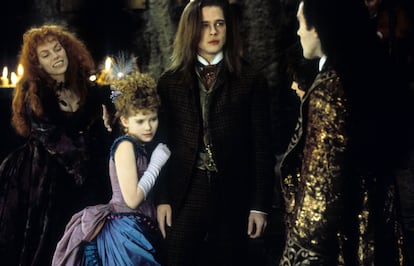
Two characters in search of an author
It must be said that Rice, at the height of her popularity after publishing three sequels to her successful vampire epic, fought tooth and nail to ensure that the film reflected the essence of her fictional universe in a satisfactory way. Beyond the script, her efforts focused on the cast. She suggested Alain Delon for the role of Louis, considering him ideal to portray the reflective, grieving and melancholic dimension of a character who feels like “an angel dragged into the abyss by the seduction of a demon.” For Lestat, she opted for Julian Sands, the British actor who had become famous for A Room with a View (1985), although she also did not dislike options that were considered such as John Malkovich, Peter Weller, Jeremy Irons, or the Russian dancer Alexander Godunov.
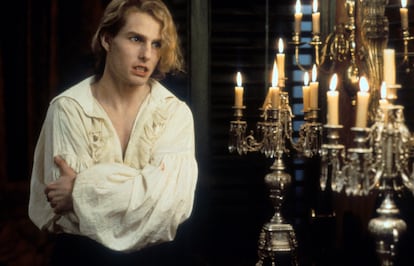
The final blow for Rice was the choice of Cruise, an actor she genuinely disliked and considered lacking the vitality, cynicism and worldly charm of Lestat. In a desperate attempt to rectify the situation, she went so far as to ask Jordan and Geffen to have Pitt and Cruise switch roles (she thought Lestat was the more demanding role and Pitt the actor with more substance of the two), arguing that asking Cruise to play Lestat was like having Edward G. Robinson play Rhett Butler in Gone with the Wind.
The writer lost this last battle, which she considered decisive, and began to distance herself from the film. She even predicted that it would fail at the box office, because the readers of Interview with the Vampire were not going to accept that someone like Cruise could put himself in the skin of Lestat, the most complex and charismatic character in her universe.
Today we know that Rice was wrong. She herself eventually acknowledged it, as soon as she had access to the filmed material and realized that “Tom had hit the nail on the head playing Lestat”: his cruelty, his refinement, his sense of humor, his enthusiastic acceptance of the vampire condition. In contrast, the twist that Jordan ended up giving to the character of Louis, turning him into a victim, a bloodsucker who hates himself and who only wants to destroy himself, was disappointing to her.
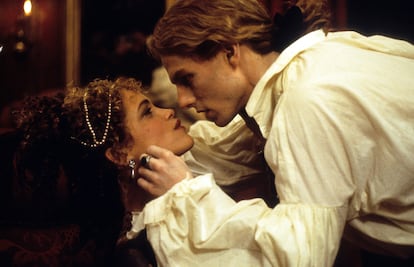
Pitt himself would admit, years later, that he would have liked to have played a Louis closer to the novel, the Catholic intellectual overwhelmed by existential problems, confused about his own sexuality. The actor explained that he was deeply unhappy during the six months of filming, especially during the winter weeks spent filming at a frenetic pace, always in night sessions, at the Pinewood studios in London. Living in “perpetual darkness,” in a cold and damp city, feeling, at the same time, that he had lost control of his character. All of this ended up leading him to a pre-depressive state, a melancholic sadness, which, in his opinion, is evident on the screen.
Despite the traumatic experience of one of the main actors, the film was a success. Jordan was able to confirm in a U.S. project worth $70 million all the (good) things he had hinted at in more modest productions, such as Mona Lisa, The Company of Wolves or The Crying Game. From then on, his career would enter a virtuous circle.
Geffen would consolidate his reputation as a producer with a nose for the action, a privileged creator of films capable of combining commercial success with a certain artistic vision. Rice was able to reconcile herself with Cruise, with Jordan and with cinema, although the audiovisual franchise that would derive from Interview with the Vampire (another film and a series, each one worse than the other) would never live up to its spectacular start. And the film helped to boost the careers in Hollywood of the young Dunst and a couple of European film stars determined to make a name for themselves on the other side of the Atlantic: Stephen Rea and Antonio Banderas.
Not a bad balance for a film that we now perceive as solid, nourishing and with considerable cinematic virtues (starting with its perverse sense of humor), beyond an inappropriate kiss and the strange transformation of a couple of lovers into simple roommates who cordially detest each other.
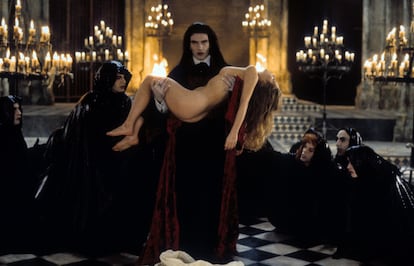
Sign up for our weekly newsletter to get more English-language news coverage from EL PAÍS USA Edition
Tu suscripción se está usando en otro dispositivo
¿Quieres añadir otro usuario a tu suscripción?
Si continúas leyendo en este dispositivo, no se podrá leer en el otro.
FlechaTu suscripción se está usando en otro dispositivo y solo puedes acceder a EL PAÍS desde un dispositivo a la vez.
Si quieres compartir tu cuenta, cambia tu suscripción a la modalidad Premium, así podrás añadir otro usuario. Cada uno accederá con su propia cuenta de email, lo que os permitirá personalizar vuestra experiencia en EL PAÍS.
¿Tienes una suscripción de empresa? Accede aquí para contratar más cuentas.
En el caso de no saber quién está usando tu cuenta, te recomendamos cambiar tu contraseña aquí.
Si decides continuar compartiendo tu cuenta, este mensaje se mostrará en tu dispositivo y en el de la otra persona que está usando tu cuenta de forma indefinida, afectando a tu experiencia de lectura. Puedes consultar aquí los términos y condiciones de la suscripción digital.
More information
Archived In
Últimas noticias
Welcome to the post-religion era: The idea of Christianity as the absolute truth has become obsolete
‘I thought you would like it’: The risky sexual practice popularized by TV shows and TikTok
The digitalization of tourism: ‘They promise experiences and gave us the worst possible one’
Mexican peso defies uncertainty with forecasts of a new period of stability in 2026
Most viewed
- Sinaloa Cartel war is taking its toll on Los Chapitos
- Oona Chaplin: ‘I told James Cameron that I was living in a treehouse and starting a permaculture project with a friend’
- Reinhard Genzel, Nobel laureate in physics: ‘One-minute videos will never give you the truth’
- Why the price of coffee has skyrocketed: from Brazilian plantations to specialty coffee houses
- Silver prices are going crazy: This is what’s fueling the rally

